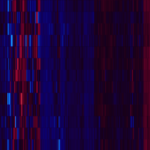Lien vers Pubmed [PMID] – 35918360
Lien DOI – 10.1038/s41467-022-32234-y
Nat Commun 2022 Aug; 13(1): 4490
First identified in 1947, Zika virus took roughly 70 years to cause a pandemic unusually associated with virus-induced brain damage in newborns. Zika virus is transmitted by mosquitoes, mainly Aedes aegypti, and secondarily, Aedes albopictus, both colonizing a large strip encompassing tropical and temperate regions. As part of the international project ZIKAlliance initiated in 2016, 50 mosquito populations from six species collected in 12 countries were experimentally infected with different Zika viruses. Here, we show that Ae. aegypti is mainly responsible for Zika virus transmission having the highest susceptibility to viral infections. Other species play a secondary role in transmission while Culex mosquitoes are largely non-susceptible. Zika strain is expected to significantly modulate transmission efficiency with African strains being more likely to cause an outbreak. As the distribution of Ae. aegypti will doubtless expand with climate change and without new marketed vaccines, all the ingredients are in place to relive a new pandemic of Zika.








